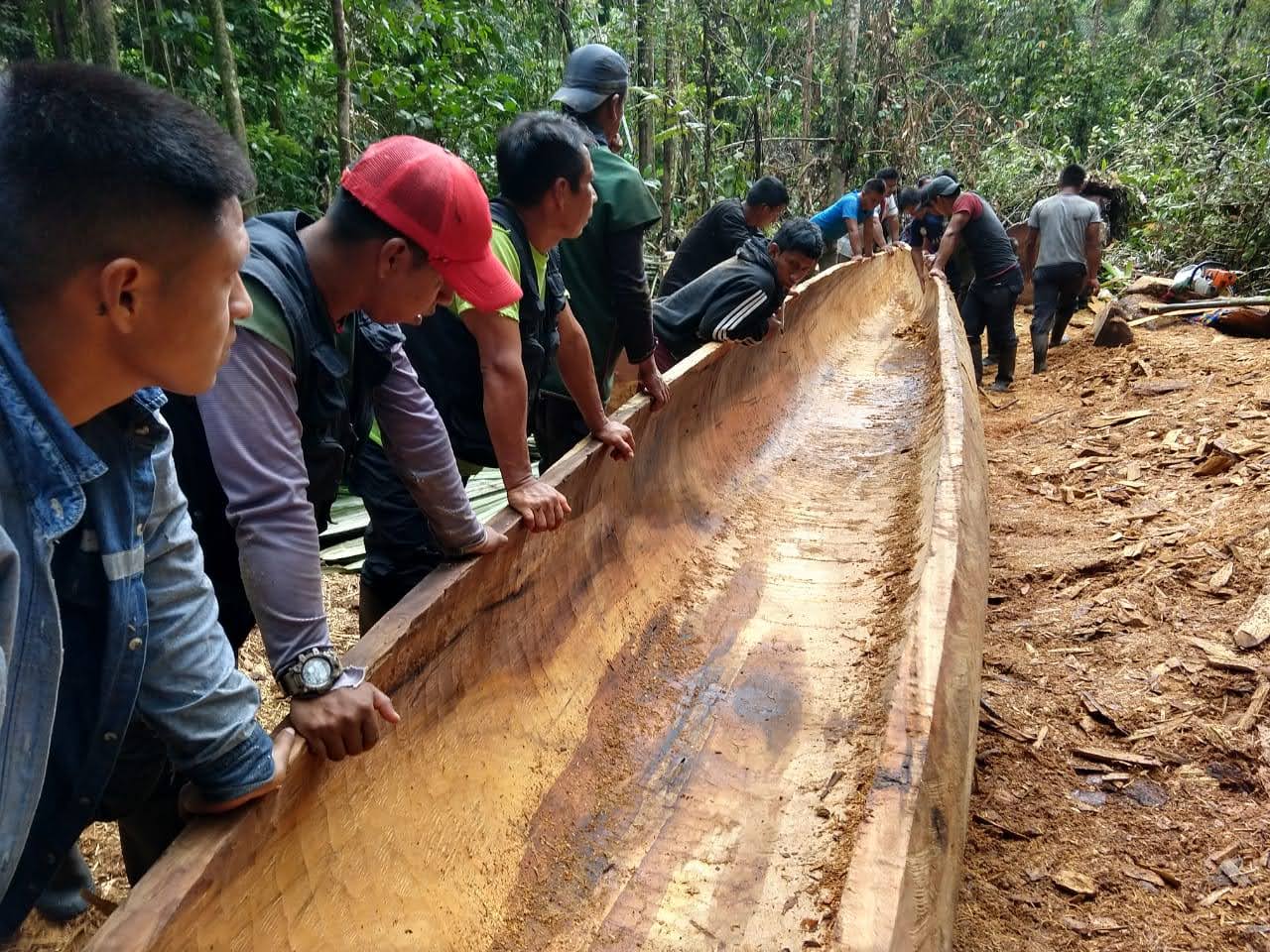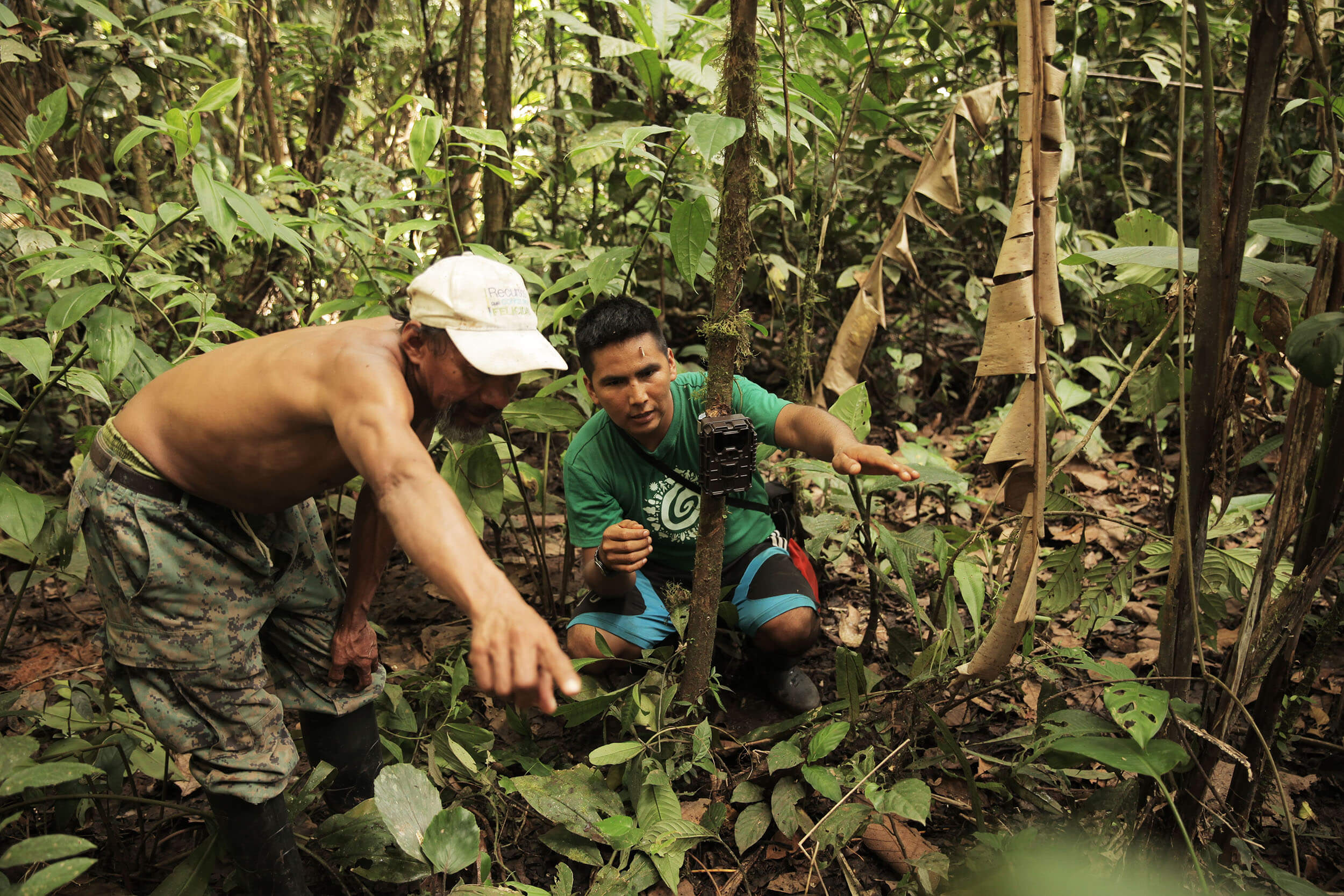They are the “eyes” of their communities. Watching over their forests and rivers and looking out for the safety and well-being of their people. They are youth and elders, men, and women. Patrolling the land and warding off threats to their territories, cultures, and ways of life. They are the Indigenous Guards of the Amazon rainforest. Fighting for Indigenous autonomy and self-determination – and showing the world what Indigenous-led conservation is all about.
By enacting their communites’ mandate, Indigenous guards are fighting to protect their ancestral territories from some of the key drivers of climate change, including oil, mining, and logging. These intergenerational groups use multiple strategies of territorial defense that pair their ancestral knowledge with technology, from mapping their ancestral lands to monitoring threats through tools including camera traps, GPS and drones.
Their vital work serves to protect their people’s physical and cultural survival and to keep the last bastions of wild forest standing. And the world is taking note. The conservation efforts of Indigenous guards are now gaining global recognition. Earlier this year, the Goldman Environmental Prize recognized the remarkable conservation efforts of the Indigenous guard of the A’i Cofan community of Sinangoe that stopped a gold rush in its tracks!
In the following photo essay, we share insights into their vital work and the perspectives of Indigenous leaders and guard members, who are risking their lives to defend their territories in one of the world’s deadliest regions for land and human rights defenders. Indigenous peoples and human rights defenders such as Amazon Frontlines lawyer Maria Espinosa, who provides technical and legal support to Indigenous guards, face criminalization, stigmatization, and death threats for their legitimate work.
But they’re not backing down. Through their organizing, Indigenous guards in the upper Amazon are strengthening their peoples’ struggles to advance Indigenous rights and permanently protect more than twenty million acres of the most biodiverse rainforest in the world.
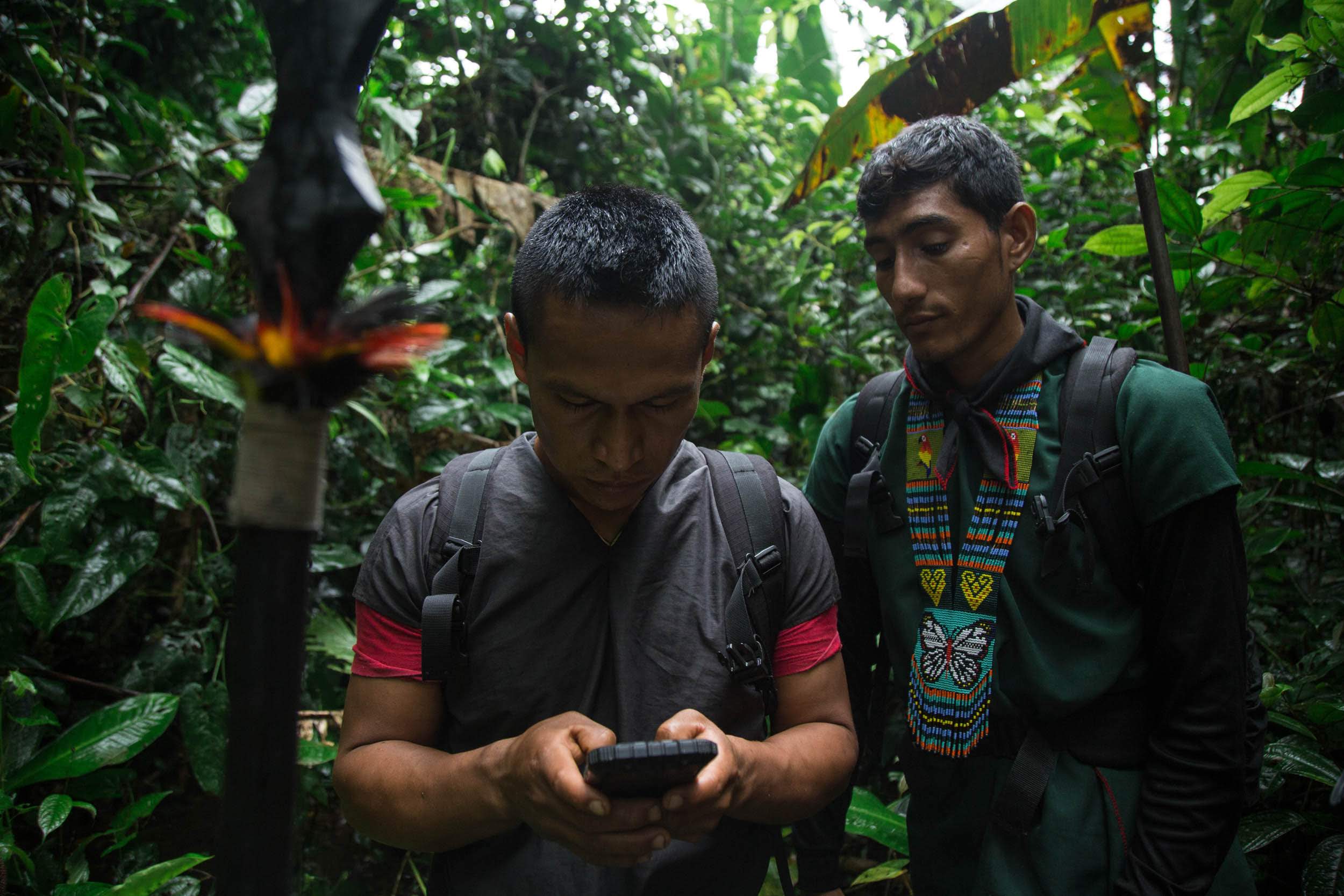
Indigenous guards, like the A’i Cofan guard of Sinangoe, pair the latest technology with their ancestral wisdom to detect and document threats to their territories.
“Our strength is in our word, in our ancestral medicine, in our bastion, in our spear, in our will to patrol our territory. It is in the mandate and the power of our community.”
– Mario Erazo Yaiguaje, Siona defender of the Putumayo River

Indigenous peoples unite during Ecuador’s first national gathering of Indigenous guards, September 2022. Over 200 people from the Amazon, Andes, and the coast gathered to organize and share territorial defense strategies.
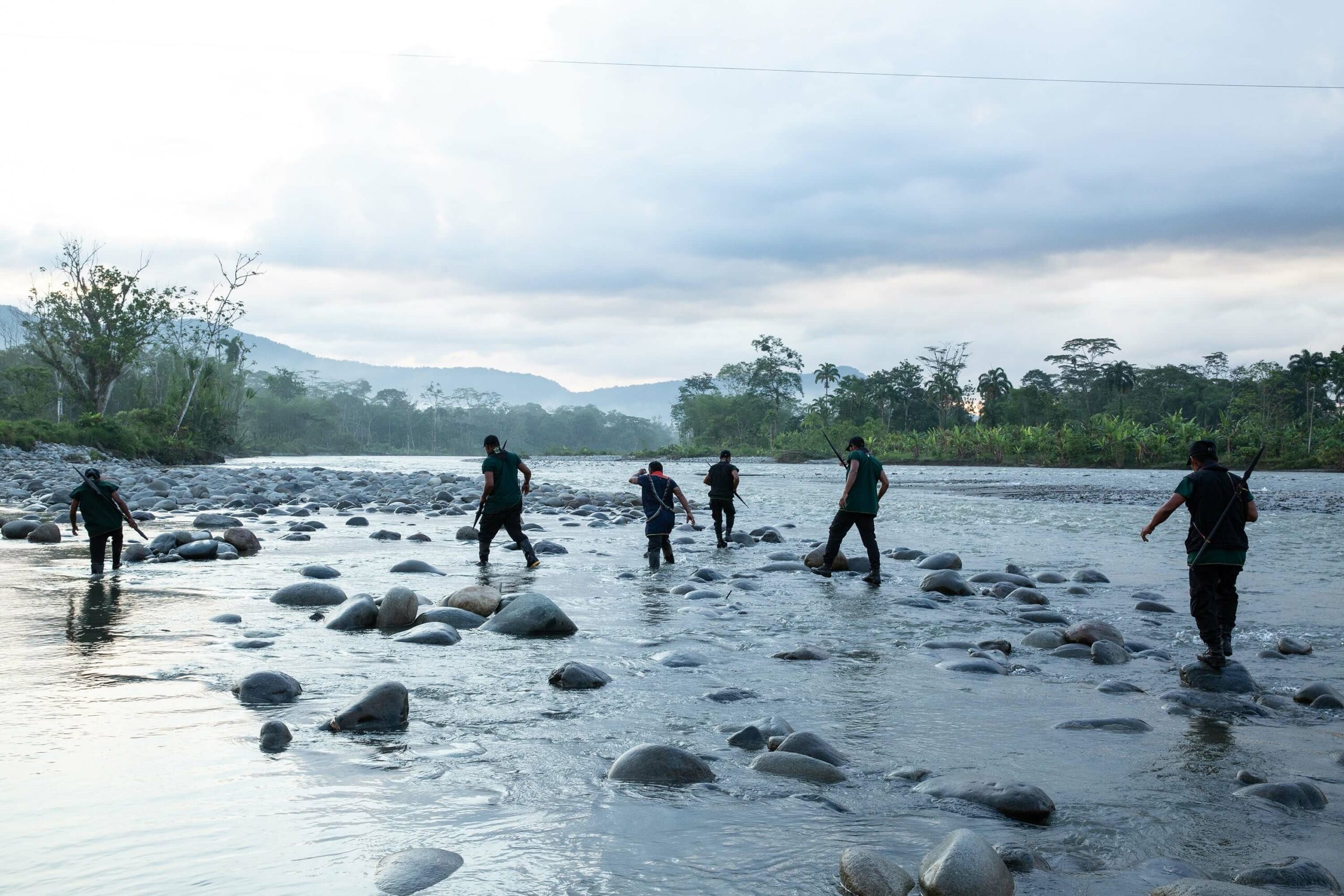
Indigenous guards walk long distances to monitor their lands, and they must be prepared to defend themselves against illegal poachers, miners and loggers trespassing their territories.
“We defend our territory because it’s our life. We live and breathe because of our territory. Thanks to the work of our community guard, we were able to force mining companies out of our lands and make them respect our home.”
– Alexandra Narvaez, A’i Cofan leader of Sinangoe & Goldman Prize Winner

Members of the Indigenous Guard of the A’i Cofan community of Sinangoe. While deforestation advances in Ecuador’s Cayambe Coca National Park, it stops at the limits of the ancestral territory of Sinangoe, which is protected by the guard.
“The guard is an exercise of our fundamental rights as Indigenous peoples. Its legacy comes from our ancestors who cared for our territories since time immemorial. We continue this struggle today. We know that our forests and rivers maintain the balance of our shared climate and without them, all life on our planet is at risk.”
– Alex Lucitante, A’i Cofan Leader & Goldman Prize Winner
Members of the A’i Cofan Guard of Sinangoe carry a freshly built 25-foot-long canoe towards the river. The traditional hardwood canoe can safely weather the waves and rapids of their rivers and will be used to navigate and monitor their lands. Photos: Nixon Andy Narvaez

Indigenous guards also work with their communities to map their ancestral territories, documenting historical and sacred sites, jaguar trails, medicinal plants, animal reproductive zones, important fishing holes, creek-crossings, waterfalls and more.
“We pair technology like drones, GPS and camera traps with our ancestral knowledge to detect and document invasions in our territory, and to collect evidence to file formal complaints to authorities and even lawsuits. Our struggle for survival goes on. As a member of my community’s guard, I know what it takes to fight, day in and day out. The most important thing is to have the heart and the will to protect our territory.”
– Nixon Andy Narvaez, A’i Cofan filmmaker & coordinator of the Sinangoe guard
Left: Camera traps are used in community-led territorial mapping processes to document wildlife, and for monitoring purposes, to detect illegal invaders such as poachers. Right: The use of mobile phones equipped with mapping applications like Mapeo helps Indigenous communities build their own map of their land while also identifying and georeferencing threats like illegal logging, poaching, mining and fishing.

The Siona guard of the Putumayo River patrols their land in one of the world’s most dangerous regions for land defenders on the Ecuador-Colombia border, fighting against threats including oil companies and narco-deforestation.
“When you walk through Siona territory, you feel exactly what the elders say, that everything is alive. They teach us about the importance of our duty as Siona, to care for and protect our territory. I dream that our young people will defend our territory. And that will be our legacy. And it’s not just for us. It’s for the world.”
– Adiela Mera Paz, Siona leader of the Putumayo River
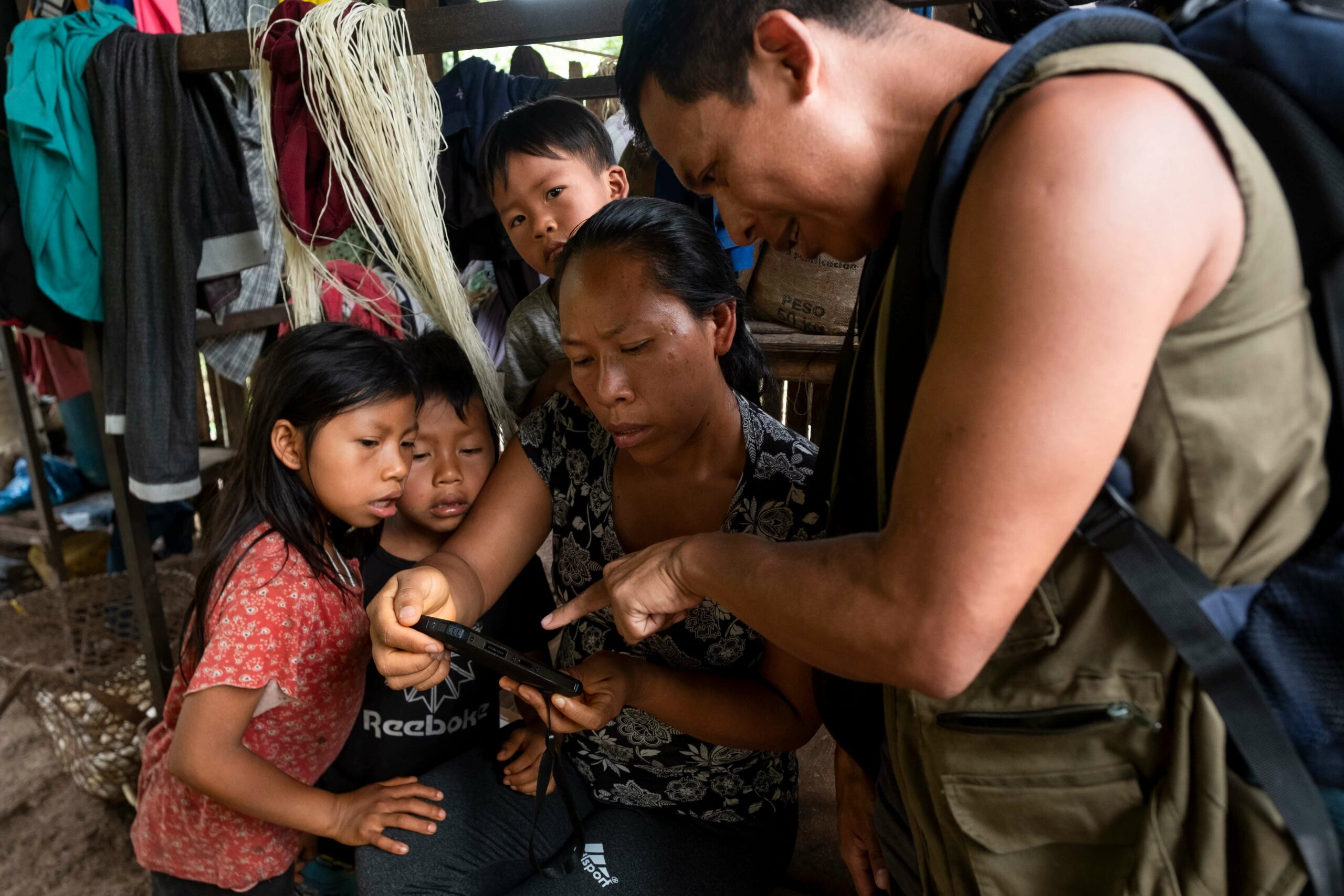
Meñebai is the name of the first Waorani guard formed in the region of Pastaza in the Ecuadorian Amazon during COVID-19. Meñebai means “I am a jaguar” in the Wao Tededo language.

The Meñebai guard of the Waorani people of Pastaza, conformed of elders and youth, patrols their land against threats including oil, mining, and illegal logging.
“Oil companies, miners, loggers, poachers, and foreign diseases like COVID-19 endanger our way of life and our territory. The Indigenous Guard is born from a collective decision made by our communities. As members of the guard, we protect the life and culture of our people”.
– Oswando (Opi) Nenquimo, Waorani leader

Indigenous peoples from across Ecuador and Colombia united during a historic gathering of Indigenous Guards held in the A’i Cofan community of Sinangoe, September 2022. Together, they published a mandate available in Spanish here.

